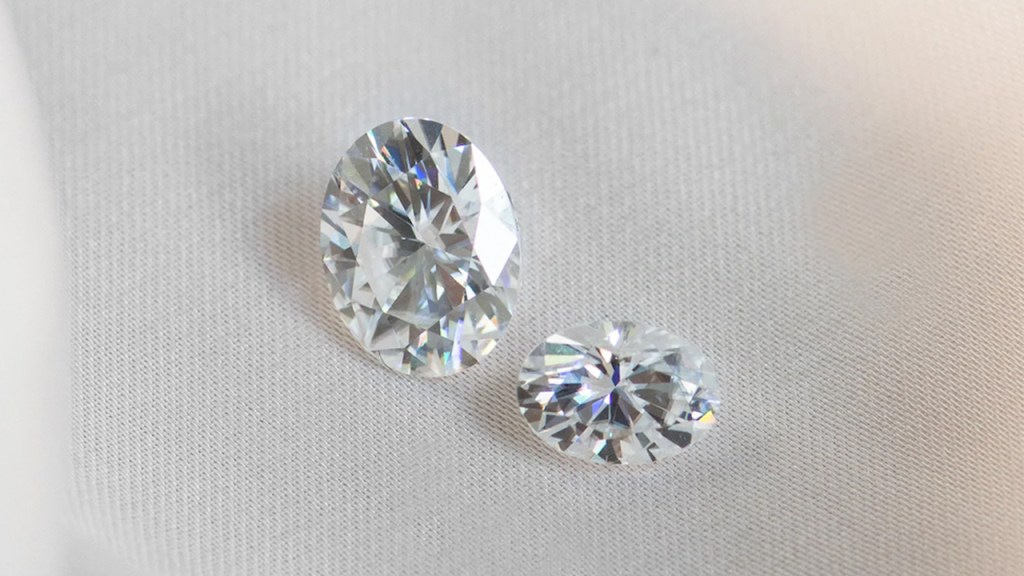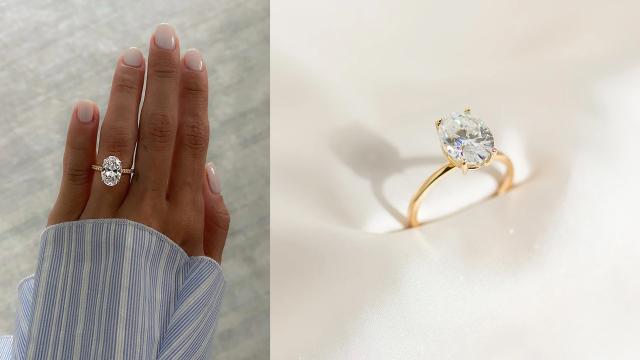Well, it’s the end of the year which means one thing: engagement season is about to be upon us (gird your loins, people). If you’re considering popping the question over the holiday period or at some point next year, you may be wondering about your options. From a plain old diamond to moissanite or lab-grown gems, folks today are realising that there are far more options in the engagement ring game than you might have originally assumed.
We’ve written about the benefits of shopping for a moissanite ring before, but how about lab-grown diamonds versus natural? To learn a little bit more, we chatted with Rebecca Klodinsky, founder of lab-grown Moissanite and Diamond jeweller Prestwick Place.
Here’s what we learned.
What’s the difference between lab-grown and natural diamonds?

Firstly, Klodinsky made clear that at a physical level, there is no difference between diamonds that are lab-grown or naturally occurring. The only thing that separates the two is where they are produced.
“Lab-Diamonds are real diamonds,” she stressed.
“The only point of difference is that natural diamond is extracted from the earth through ecological devastating processes. There is no difference between lab diamonds and natural diamonds.”
Price: Laboratory grown is cheaper
No real surprises here, but laboratory diamonds are more affordable than natural.
How much cheaper, you may be wondering? Klodinsky shared that “lab diamonds are typically 30-50 per cent less expensive than [a] mined diamond. This is wholly due to the costs surrounding diamond mining and inflation prices,” she said.
Ethics
This is arguably the point that brings most people’s attention towards lab-grown stones. And for good reason. The ethics around diamond mining has long been a cause for concern. Producing diamonds in laboratory settings is a vastly different story, Klodinsky explained.
“Since lab diamonds are not mined, and they touch fewer hands, they are considered sustainable.”
“Lab-Diamond is also end-to-end traceable and entirely free from conflict. Natural diamonds cannot be considered ethical. Even though many brutal civil wars have now ended, violence in diamond mines remains a serious problem. Many diamonds are still stained by severe human rights abuses… [Comparatively], There are very few people involved in the making of a lab-grown diamond.”
Appearance: Lab-grown is the same
As you can likely gather from our above comments on how natural and lab-grown stones are the same, that is also the case when it comes to appearance.
Klodinsky simply stated that “Diamonds grown in a lab have the same physical and chemical properties and exhibit the same optical properties as those found in the earth.”
Durability: Again, no difference
Different question, same story. These two kinds of stones are the same, so “again, Natural Diamonds and Lab Grown Diamonds are exactly the same hardness level and durability,” Klodinsky said.
How to choose a lab-grown stone
If you’ve decided lab-grown is the way for you, Klodinsky said that the best approach to choosing your stone is to “get the cut nailed down. From here, it’s a matter of considering your budget and the visual characteristics you want and need.”
Considering the more affordable entry point of these gems, you’ll likely have more options to work with when choosing your cut, colour, clarity and carats for your ring’s centrepiece.

Leave a Reply
You must be logged in to post a comment.